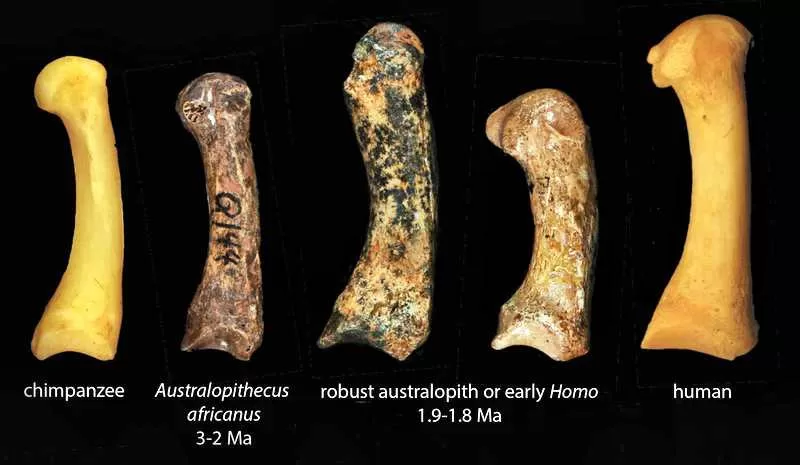The power of human hands may be older than we thought. A recent study reveals that our early ancestors, known as Australopithecus africanus, had impressive hand skills. Researchers used advanced X-ray technology to examine the bones of these ancient relatives. They discovered a unique structure linked to a strong grip.
Matthew Skinner, a paleoanthropologist from the University of Kent, was part of the research team. He stated, “This is clear evidence that these australopiths used their hands in ways similar to modern humans and Neanderthals.” The findings were published in the journal Science.
Human Hands vs. Great Apes
The human hand is designed for fine manipulation, far beyond what great apes can do. For instance, a chimpanzee cannot hold a pencil like we can. This is due to our short fingers and long thumbs, which allow us to press our thumb against our fingers easily. While chimpanzees do use tools, like twigs to extract termites, the use of stone tools has been seen as a uniquely human trait.
The earliest known human ancestors, called Homo habilis or “handy man,” were believed to be the first stone toolmakers. Their hand bones showed features similar to modern humans. Evidence of stone tool use dates back to 2.4 million years ago. Recently, researchers claimed to have found animal bones with cut marks from stone tools, dating back 3.4 million years. This discovery was linked to Australopithecus afarensis, suggesting that our ancestors might have been skilled tool users.
New Findings on Hand Bones
The new study of Australopithecus africanus hand bones adds to this evidence. Skinner and his team noted that bone is a living tissue that adapts to stress. They found a unique internal structure in the hand bones of humans, which is not present in chimpanzees. This structure forms when we use a strong grip, like opposing our thumb and fingers.

The same human-like pattern was found in the hand bones of Australopithecus africanus, indicating that this grip may have been common as far back as 3 million years ago. Skinner expressed excitement about the findings, stating, “Some aspects of our anatomy are unique and define us as a species. Our study shows that these unique hand features have a deeper evolutionary history than we thought.”
What Were They Doing?
While it’s unclear if Australopithecus africanus used stone tools, the findings suggest they were actively using their hands. Brian Richmond, a paleoanthropologist at the American Museum of Natural History, emphasized that the study provides evidence of handling objects in a human-like manner. He noted, “This suggests they were actually doing it, not just that they could.”
Australopithecus walked upright and had hand proportions similar to modern humans. This makes it likely they could manipulate various objects. Richmond added, “It gives us a high-resolution glimpse into the kinds of joint stresses that were happening in the hands, some 2 to 3 million years ago.”
Conclusion
The study of Australopithecus africanus hand bones reveals that our ancestors may have had advanced hand skills much earlier than previously believed. This research opens new avenues for understanding the evolution of tool use and manipulation in human history. As scientists continue to explore these ancient relatives, we may uncover even more about the remarkable capabilities of our early ancestors.

